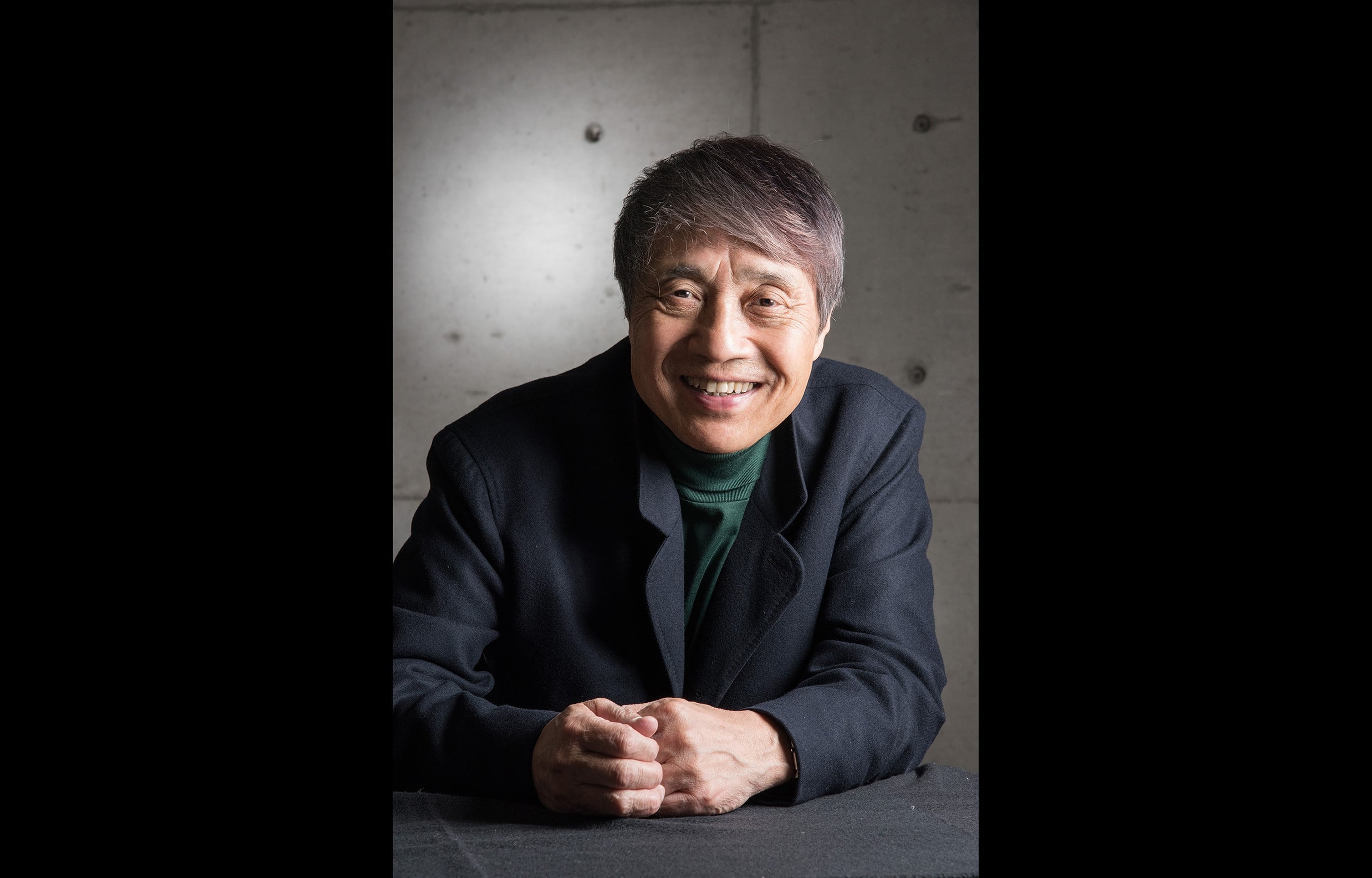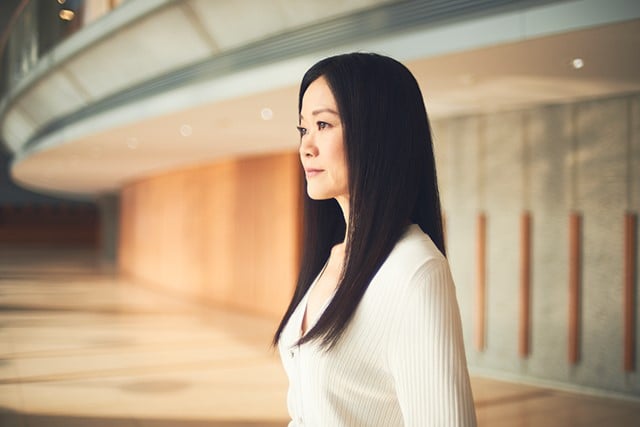Osaka’s business leaders with strong spirits supported the young and still unknown architect during his early days.
Ando grew up in the backstreets of Osaka, and he trained himself as an architect. In 1969, at the age of 28, he founded Tadao Ando Architect & Associates in Osaka’s Umeda. By the 1980’s, his works in Tokyo increased and by the 1990’s, works from overseas increased as well. Even if the location was inconvenient for his business, Ando had always kept his base in Osaka. He continues to announce his work to the world from Osaka without moving to Tokyo.
In 1971, Ando received his first construction project to build a residential house for his friend’s brother from school. He rebuilt a northern unit of a traditional Japanese row house that was connected to three other small houses. The house was built using exposed concretes on the 79 square-meter space. The residential house was later purchased and expanded by Ando, and the space is still used for his studio.
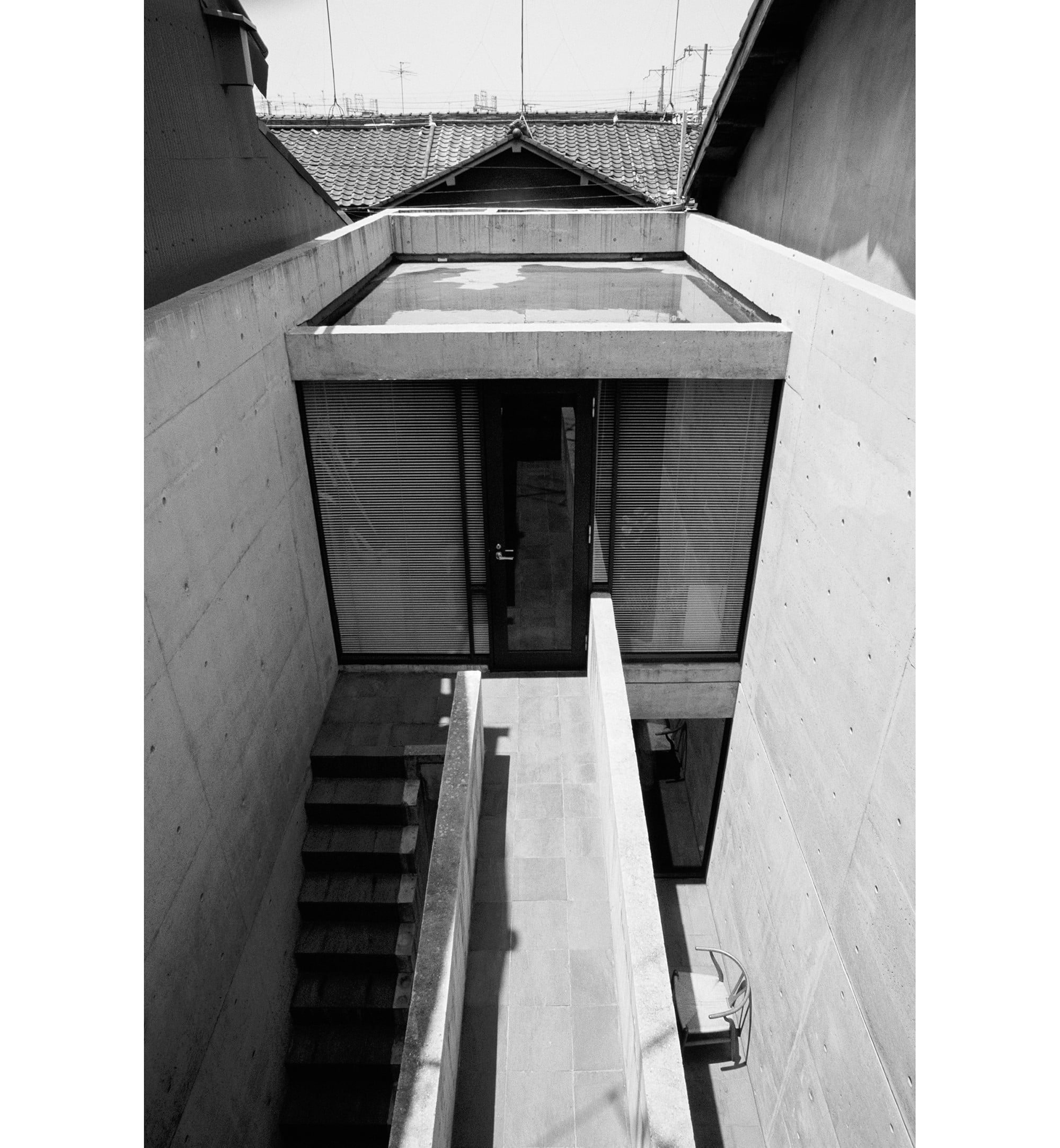

Tadao Ando’s early work, “Sumiyoshi no Nagaya”
© TADAO ANDO ARCHITECT & ASSOCIATES
“The residential house appeared on the ‘Toshi Zyutaku’ magazine, and the person who saw the article requested me to design the Sumiyoshi no Nagaya (Built in 1975). Afterwards, top business leaders from the Kansai Regions such as Keizo Saji from Suntory and Hirotaro Higuchi from Asahi Breweries have requested me to design. Many of them had the traditional Kansai spirit of taking risks, and entrusted myself, who was a young architect without any major achievements.”
“Meeting with business leaders and cultured persons who are free in mind and fearless, had allowed myself to learn many things. As long as you have a strong passion, Osaka is a city where there is always someone who will respond to you, even if you have no network. Osaka is an interesting city and people are very close. I take pride in being an Osakan. Therefore, I will like to continue to work at Osaka until the day I pass away.”
Even if the realization of a design is unclear, the strong passion to realize the dream leads us to the next step.
In 1988, Ando presented a proposal for renovating the Nakanoshima’s nationally designated important cultural property, the Osaka City Central Public Hall. He prepared his proposal without receiving any request from the administration. His idea was to insert an egg-shaped hall made of concrete inside the city hall, while keeping its magnificent Neo-Renaissance style building and structure. Unfortunately, his proposal was rejected by the administration, but the proposal had captured the heart of Hirotaro Higuchi, the former president of Asahi Breweries. This meeting led to the work of Asahi Beer Oyamazaki Villa Museum of Art. A year earlier, Asahi’s rival company Suntory had opened the Suntory Museum Tempozan, (The museum was renamed as Osaka Culturarium Tempozan in 2013) also designed by Ando. The Kansai business leader’s big heart can be seen from these events.
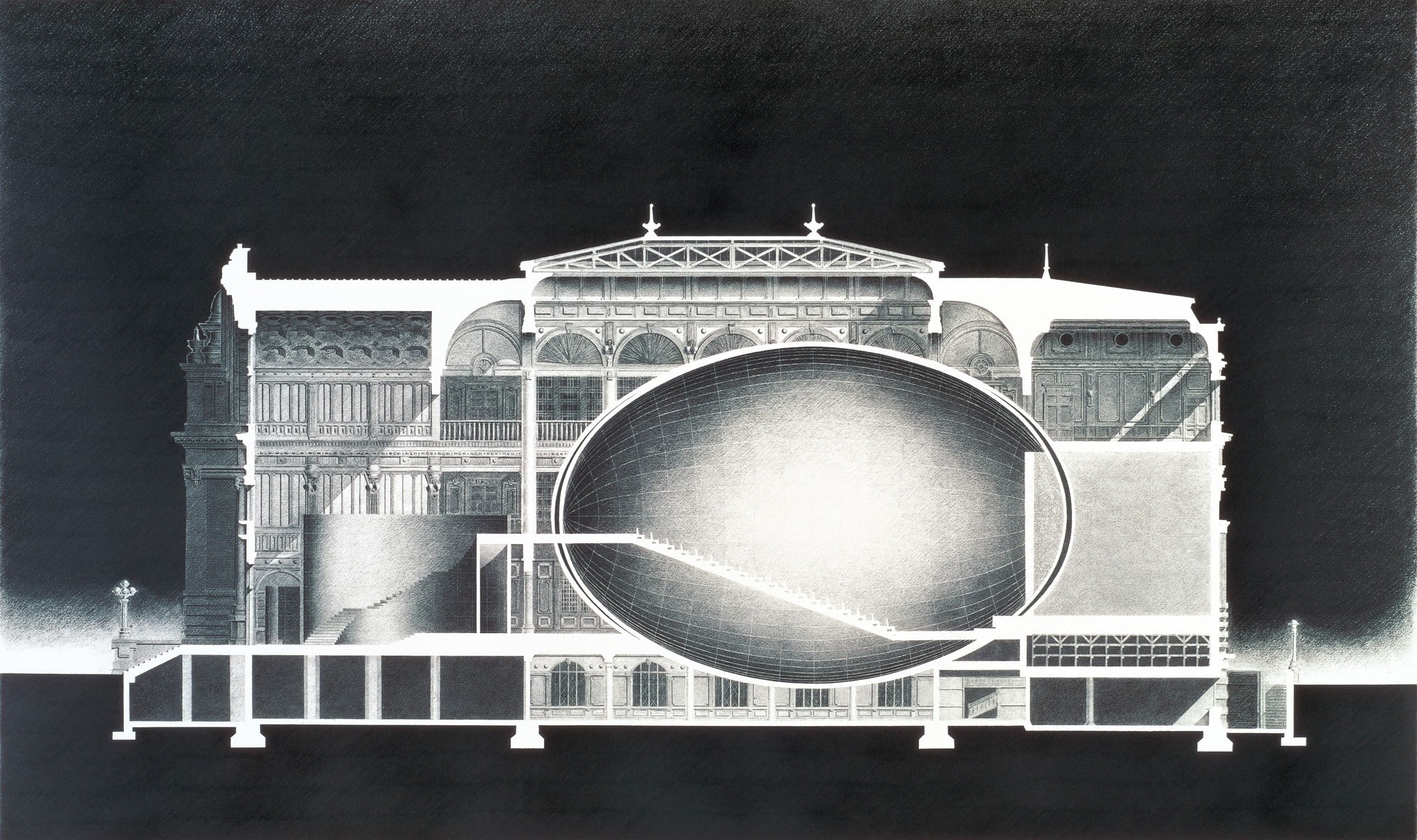

The drawing of Ando’s proposal for the Nakanoshima Project II (Urban Egg). An egg shaped hall can be seen inside the Osaka City Central Public Hall.
© TADAO ANDO ARCHITECT & ASSOCIATES
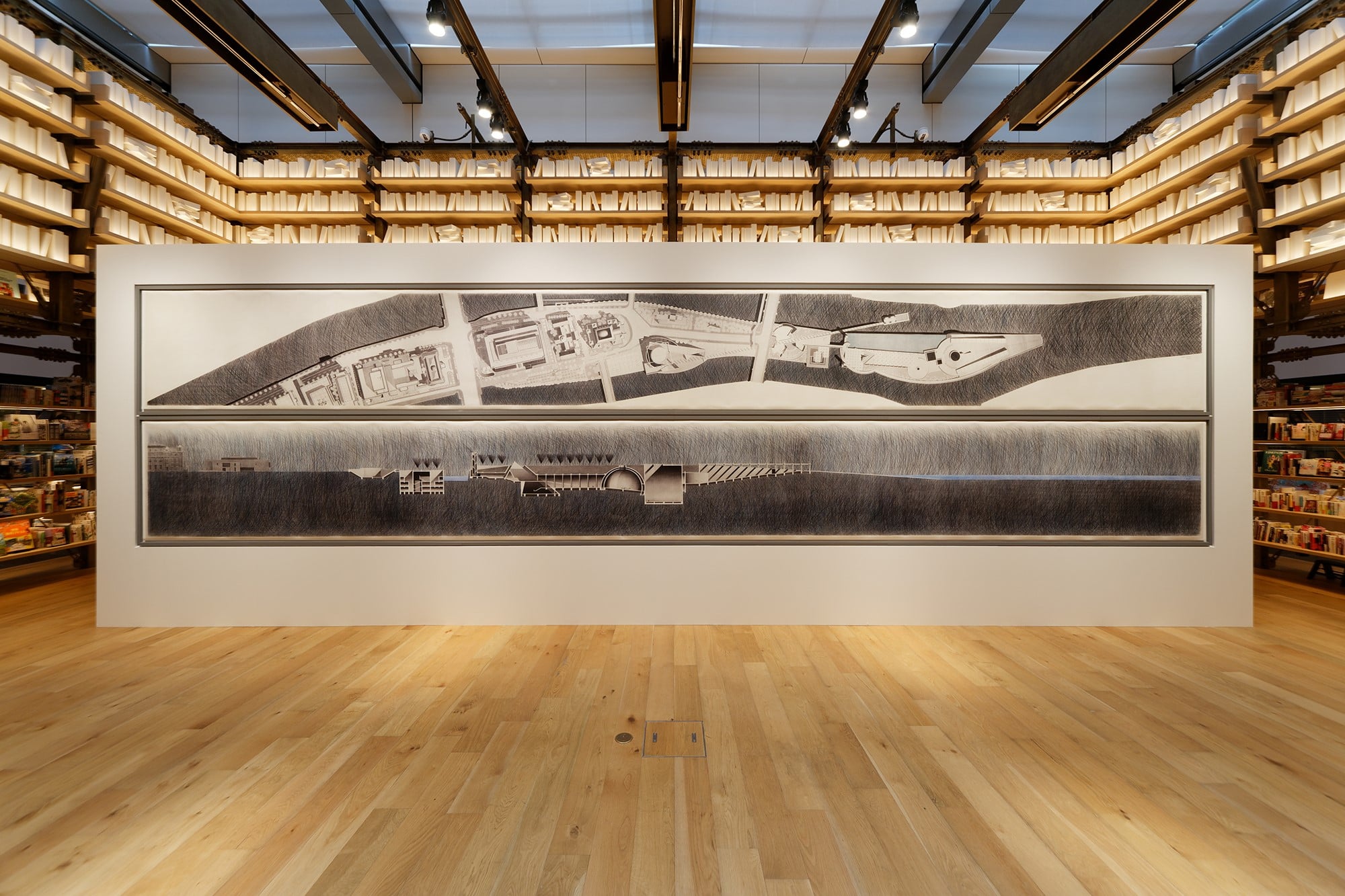

In June of 2019, two drawings of the 10-meter Nakanoshima Project was displayed at the “Tadao Ando: Challenge” exhibition at the Tsutaya Shoten Ginza in GINZA SIX. The displayed work was a reproduction using high definition print technology from the original work which was all hand-drawn. Ando’s work portfolio, ANDO BOX V includes the “Urban Egg”, which was announced from amanasalto. http://amanasalto.com/
©amanasalto
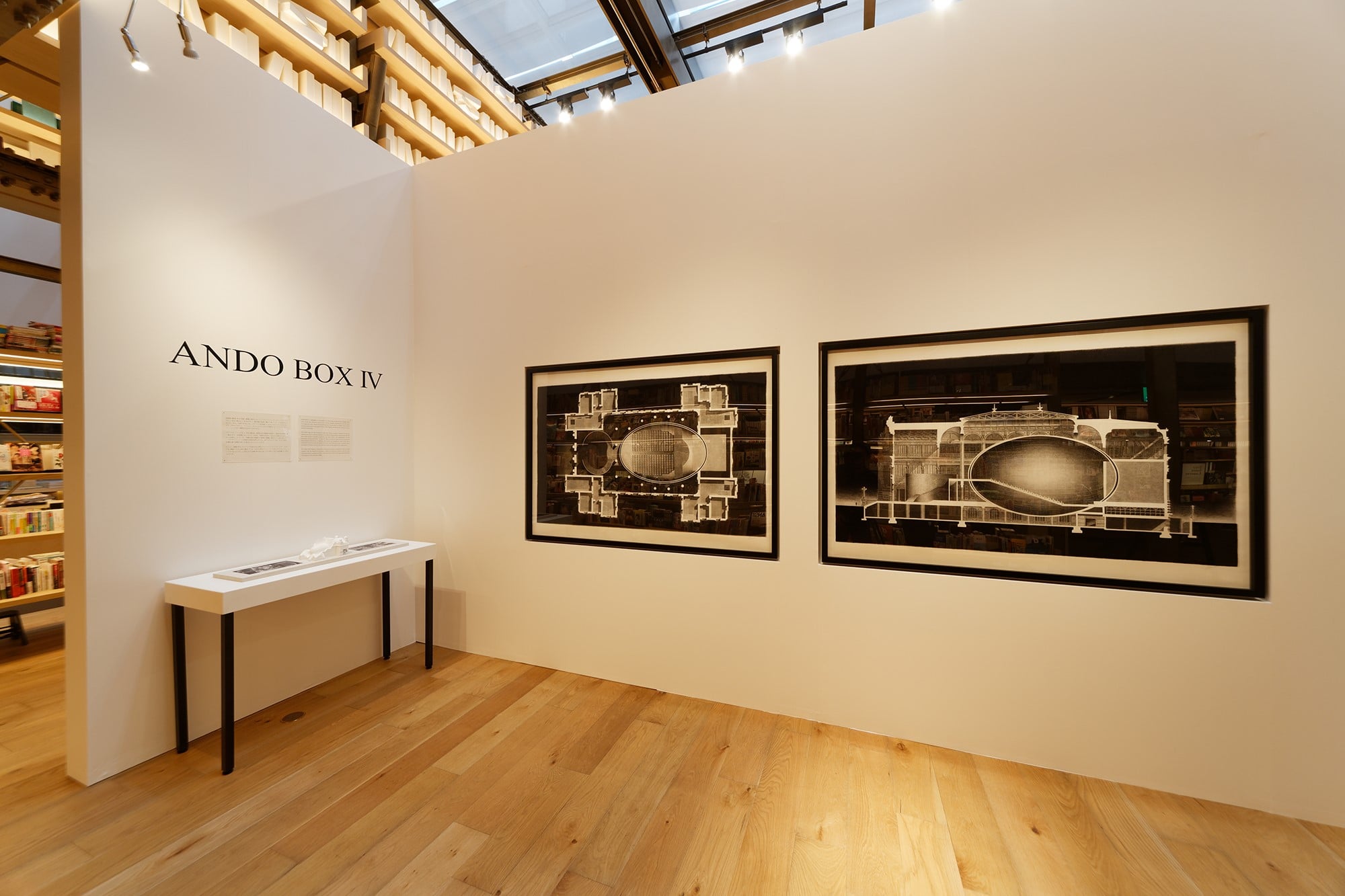

One can understand the scale of this project only after seeing the displayed drawings and models at the exhibition. Since this was a proposal which Ando presented without receiving any requests, his ideas and dream expanded without stopping.
©amanasalto
Nakanoshima, the center of Osaka.
The Osakan’s pride of creating their city by their own hands.
Since the Edo Period, Nakanoshima has prospered as the center of the merchant city, and the place is also important to Ando. In March of 2020, Nakanoshima Children’s Book Forest is scheduled to open inside the Nakanoshima Park. The construction was decided from Ando’s strong wish to stimulate the future children’s intellectual curiosity, by creating a book forest that surrounds the children with books.
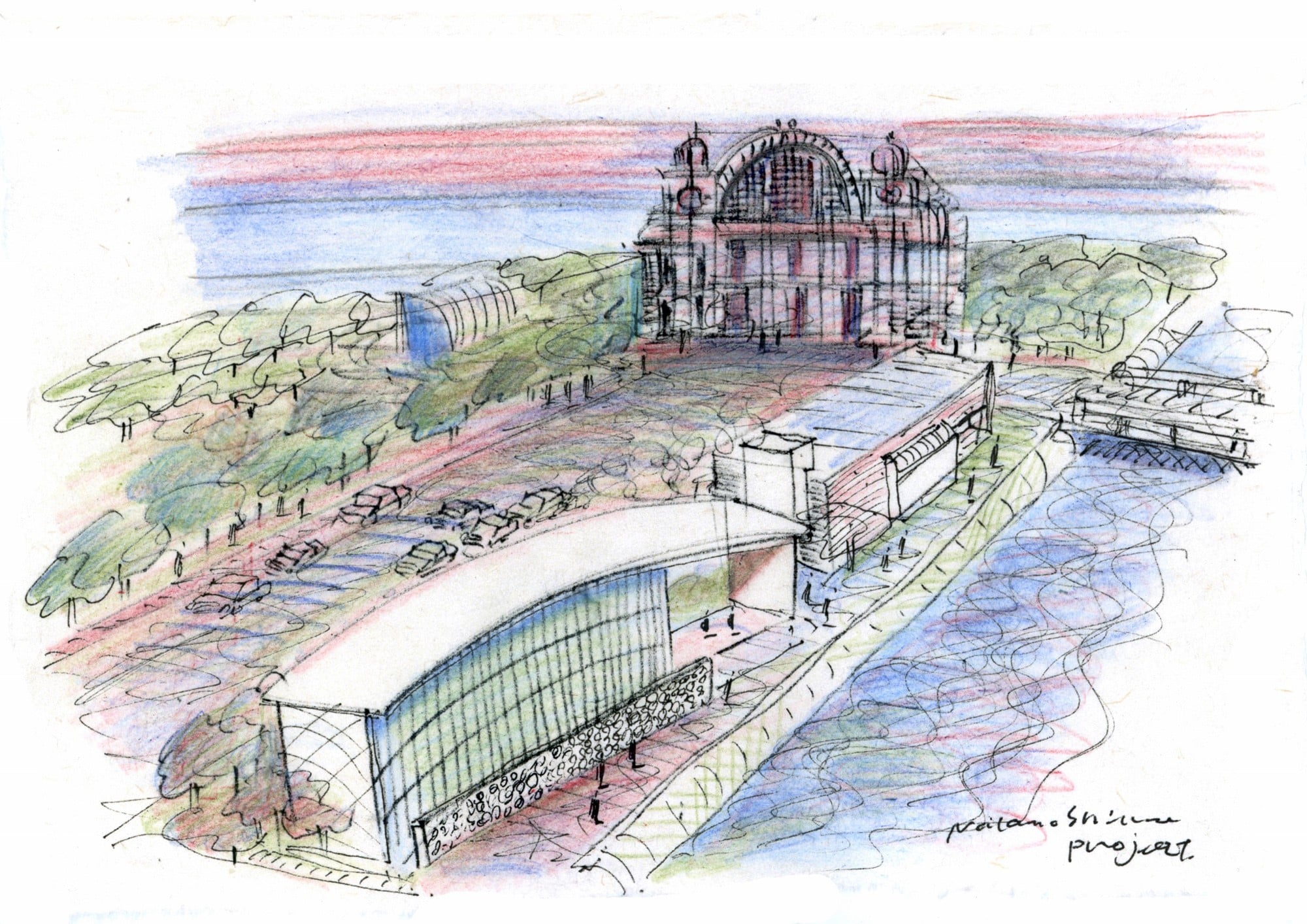

The drawing of Nakanoshima Children’s Book Forest, which is scheduled to open in March of 2020. Ando himself designed the book forest and donated to Osaka City. He is concerned about the children who are missing the opportunity to read books, and he strongly wishes that they can become familiar with books to develop their expression, imagination and determination.
© TADAO ANDO ARCHITECT & ASSOCIATES
“The island of Nakanosima stretches from east to west, across the Midosuji Boulevard. The community development by the private citizens is still alive today at Nakanoshima, which is rarely seen in Japan. The architecture created by the private citizens and companies holds an important role in the area’s scenery, such as the Osaka City Central Public Hall donated by Einosuke Iwamoto, and the Nakanoshima Library donated by the Sumitomo Family. It can be said that the scenery of Nakanoshima was created by the public spirit of the citizens. To take over the spirit of our predecessors and to make our city beautiful by ourselves, we started several activities such as the planting of cherry blossom trees. These wishes is connected to the Nakanoshima Children’s Book Forest.”
The Green Apple looks toward the future, while remembering the traces of recovery from the earthquake disaster.
Ando have always focused on the future, but his past can be seen as well. In May of 2019, Hyogo Prefectural Museum of Art opened their second gallery building, the Ando Gallery. The gallery mainly displays Ando’s works related to the recovery project from the Great Hanshin-Awaji Earthquake, as well as his past and future works.
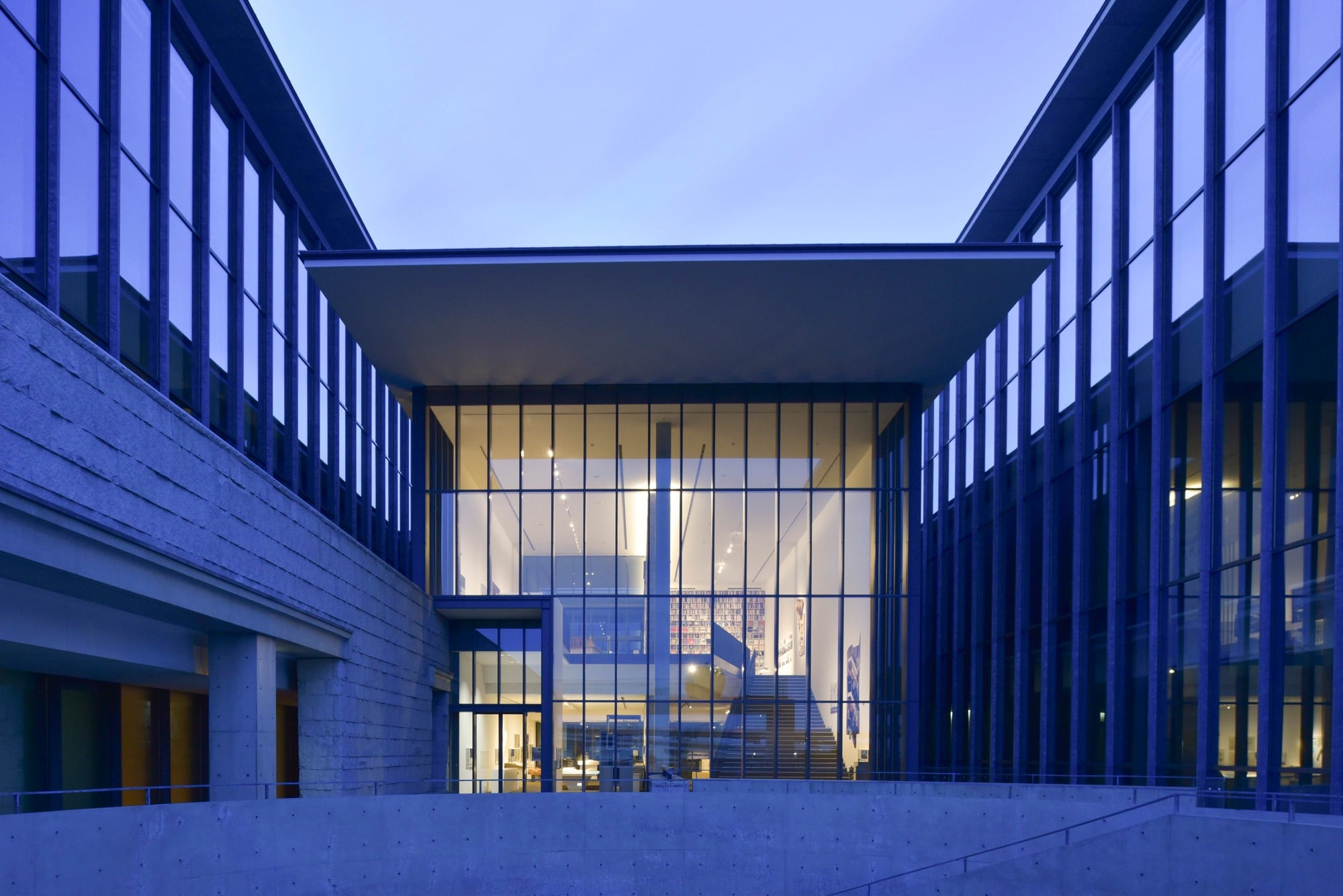

The Hyogo Prefectural Museum of Art Exhibition Block No.2 (Ando Gallery). Ando’s models and drawings are displayed at the exhibition.
© TADAO ANDO ARCHITECT & ASSOCIATES
The museum was originally designed as the symbol of cultural recovery from the earthquake disaster, and opened in 2002. It is one of the largest museum in Western Japan, and has been beloved by both visitors from inside and outside Hyogo Prefecture, for their domestic and international artworks, drama and music events. The plan of the two-layered Ando Gallery started from a conversation with the governor of Hyogo Prefecture, Toshizo Ido and the museum director, Yutaka Mino. The idea to expand the space by creating a roof between the temporary exhibition building and the permanent exhibition building, started from a conversation with governor Ido.
After the Great Hanshin-Awaji Earthquake in 1995, Ando entered into Kobe port from Osaka by boat. For several months, he stopped his studio’s work and walked around the area struck by the disaster. Having his studio based in Osaka, he often received works from Hyogo prefecture since his earlier days and therefore, he was brought to shock and despair when he first saw the damage from the earthquake. The Ando Gallery mainly exhibits models and drawings used for the planning of the restoration project, as well as the photos from that time. The visitors are moved when seeing the city of Kobe from the museum windows, a city that miraculously recovered in a quarter of a century. At the same time, they are surprised to find the art installation of a giant green apple, newly displayed on the Seaside Deck.
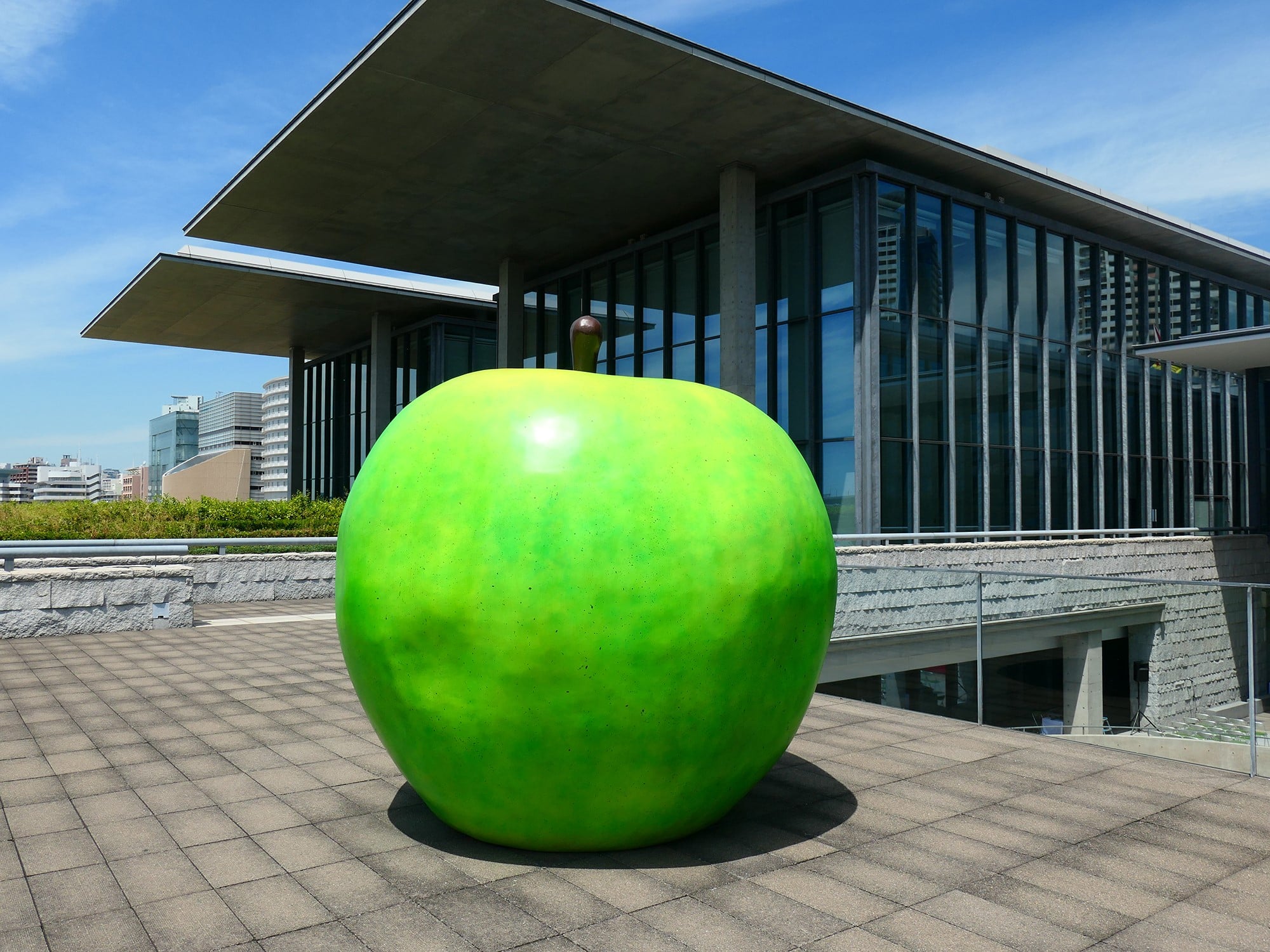

The Green Apple is installed on the Seaside Deck of the museum. Ando was inspired by the poem,“Youth” by the American Poet, Samuel Ullman.
The Green Apple has been displayed in several occasions such as the exhibition of “Tadao Ando: The Challenge” at the Centre Pompidou in 2018. During his early days, he was introduced to this poem from the chairman of Suntory, Tadao Saji. The poem, “Youth” is written by the American Poet, Samuel Ullman and his poem has inspired Ando to create the Green Apple.
“The Green Apple is a symbol of youth. As explained in Samuel Ullman’s poem, I believe that youth is not about a certain time of life. As long as people have a goal, they continue to live their youth. In an era where one lives 100 years, I strongly wish that people can remember and take back their youth by seeing this green apple at this location, where the ocean with Kobe port and mountains from Rokko Mountain can be viewed.”
Ando continues to live his youth without maturing. He identifies himself with the green apple, and keeps surprising the people as the front runner of the architectural world.
Tadao Ando
Ando was born at Osaka in 1941. He is self-taught in architecture and established Tadao Ando Architect and Associates in 1969. His major works include the Church of Light, Pulitzer Arts Foundation and Chichu Art Museum. He was awarded the Architectural Institute of Japan Prize for the Row House in Sumiyoshi in 1979, Japan Art Academy Prize in 1993, Pritzker Architecture Prize in 1995, Person of Cultural Merit in 2003, International Union of Architects (UIA) Gold Medal in 2005, John F. Kennedy Center Gold Medal in the Arts in 2010, Shimpei Goto Award in 2010, Order of Culture in 2010, Commander of the Order of Art and Noguchi Award in 2016. His solo exhibitions have been held at the New York Museum of Modern Art in 1991, Centre Pompidou in 1993. Ando have taught as a visiting professor at Yale University, Columbia University and Harvard University. He is a professor at the University of Tokyo from 1997 and became professor emeritus of the University of Tokyo since 2003.
Tadao Ando Architect & Associates
Text by Shiyo Yamashita
